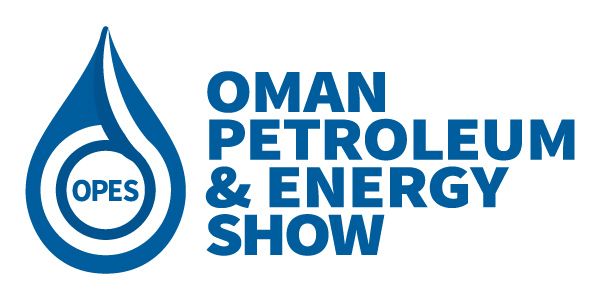A report by the U.S. Secretary of the Interior Ryan Zinke for National Petroleum Reserve in Alaska (NPR-A), has estimated that the mean undiscovered, technically recoverable resources both on and offshore to include 17.6 billion barrels of oil and more than 50 trillion cubic feet of gas.
“Earlier this year I visited the North Slope to talk with Alaska Natives and elected officials about what responsible energy development means for the communities and the state. The response was overwhelmingly positive and the message was clear: the path to American Energy Dominance starts in Alaska,” said Secretary Zinke.
“Today’s updated assessment is a big step toward that goal. Thanks to the incredible work of scientists at the USGS and BOEM, we know what’s available and what our potential is. That’s important because with the scientific knowledge, industry partners are more willing to explore the area.
“New discoveries have changed our geologic knowledge of the area – and these assessments show that the North Slope will remain an important energy hub for decades to come in order to meet the energy needs of our nation.”
The assessment was conducted by the Bureau of Ocean Energy Management (BOEM), the Bureau of Land Management (BLM), and the U.S. Geological Survey (USGS), which are all bureaus under the management of the Department. USGS led onshore efforts, and BOEM led offshore efforts with data contributed by BLM. Additional information was provided by state and industry partners.
Onshore, USGS estimates a mean of 8.7 billion barrels of oil and 25 trillion cubic feet of gas. This is a significant increase from the 2010 resource assessment, which estimated a mean of 1.5 billion barrels of oil.
Offshore, BOEM’s revised estimates of mean undiscovered technically recoverable resources in the Beaufort Sea Outer Continental Shelf Planning Area are 8.9 billion barrels of oil and 27.7 trillion cubic feet of gas.
BOEM’s updated assessment resulted in a net increase of nearly 700 million barrels of oil equivalent over BOEM’s 2016 Beaufort Sea Planning Area assessment.
”I am always mindful of the need to protect the environment and our subsistence way of life and I appreciate the Department of Interior’s commitment to responsible development.
This resource assessment tells us something our North Slope Inupiat people already know–Alaska has incredible potential,” said Alaska Native officials North Slope Borough Mayor and whaling captain, Harry K. Brower Jr.
“The Borough and the majority of our residents have long supported the careful and responsible development of oil and gas resources within our region that protects the balance between economic development and our subsistence way of life.”
“Just as we have always known, this assessment shows that the NPR-A has significant potential and will remain a big part of our energy future,” Chairman Lisa Murkowski said.
“I thank Secretary Zinke for traveling to this area with me earlier this year, for directing USGS to update its resource assessment, and for working with Alaskans on a better plan for responsible development.”\
“The good news for Alaska and America’s energy dominance continues,” said Senator Dan Sullivan. “Alaska’s vast resources offer a superior opportunity for us to provide jobs, energy, and security to our nation and our allies.
“This updated assessment by the USGS and BOEM shows that the resources are there and the time is now to invest in our vast Arctic energy potential.”
“I am pleased with the Secretary’s announcement,” said Alaska Congressman Don Young. “I have consistently fought to defend and grow both the Alaskan and American economy. Finding more recoverable oil in the NPR-A will be a benefit to everyone in our nation.
“ I stand with the majority of Alaskans in asking Secretary Zinke and the President to continue efforts to expand our energy independence through exploration and responsible development of the NPR-A and Coastal Plain.”
“A frontier to many, Alaska’s North Slope is our home; it is rich with potential,” said Richard Glenn, ASRC Executive Vice President of Lands and Natural Resources. “Any good land use and resource exploration decisions require the best available subsurface data and interpretation. I commend our colleagues on the USGS team for taking up this effort.”
ASRC is an Alaska Native Claims Settlement Act (ANCSA) regional corporation. ASRC owns more than five million acres of lands on the North Slope. Shareholder owners of ASRC are the predominant majority of the residents of the eight villages of the North Slope.
“BOEM is pleased to participate in this partnership with USGS to use shared science and new technology to produce these increased estimates of oil and gas potential in northern Alaska,” said Walter Cruickshank, acting director of BOEM.
“This assessment is a testament to the expertise of our geologists and energy resource scientists,” said Bill Werkheiser, acting director of the USGS. “These results also show the value of our partnerships, particularly with our sister agencies, the State of Alaska, and industry.”
The USGS, BLM and BOEM conducted these assessments in compliance with Secretarial Order 3352 and as part of a program directed at estimating the undiscovered, technically recoverable oil and gas resources of priority petroleum basins in the United States.
The next USGS assessments to be announced in Alaska are of the Alaska 1002 Area and the area west of the NPR-A.
This assessment is for undiscovered, technically recoverable oil and gas resources. Undiscovered resources are those that are estimated to exist based on geologic knowledge and theory, while technically recoverable resources are those that can be produced using currently available technology and industry practices.
The estimated undiscovered oil resources are significantly higher than previous estimates, mainly because two geologic formations in the NPR-A host recent oil discoveries that are larger than anticipated.
“ The current USGS estimate is more than six times the previous USGS assessments of the Central North Slope (2005) and NPR-A (2010).
Moreover, the USGS assessment team made use of three-dimensional seismic reflection data in northeastern NPR-A and adjacent State lands and waters, provided by partners like the Bureau of Ocean Energy Management, to estimate the number and size of seismic amplitude anomalies, which are considered viable proxies for undrilled prospects.
Industry Background
Industry discoveries announced during 2015–2017 indicate that the potential for larger oil accumulations in both formations is greater than previously thought.
The Pikka and Horseshoe oil discoveries near the Colville River delta just outside NPR-A were announced in 2015 and 2017.
The announcements suggest that the two discoveries 21 miles apart likely are in the same oil pool, which may hold more than 1 billion barrels of recoverable oil.
It also announced the discovery of the Willow oil pool in the Nanushuk Formation in NPR-A in 2017 with estimated resources of more than 300 million barrels of oil.
Multiple wells have been announced to be drilled during the 2017-2018 winter drilling season at both Pikka-Horseshoe and Willow to further delineate these discoveries.
Industry announced an oil discovery in the deeper Torok Formation at Smith Bay, less than one mile offshore from NPR-A, in 2016 to hold more than 1 billion barrels of oil.
Another oil discovery in the Torok Formation was announced in 2015 at the Cassin prospect in NPR-A, not far from the Willow discovery. No plans for drilling have yet been announced at either Smith Bay or Cassin.























